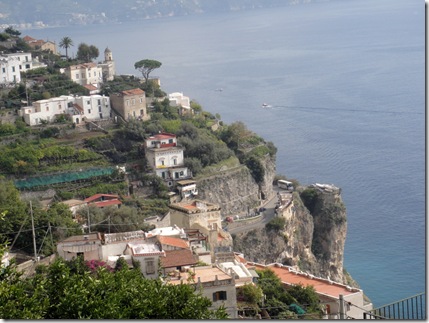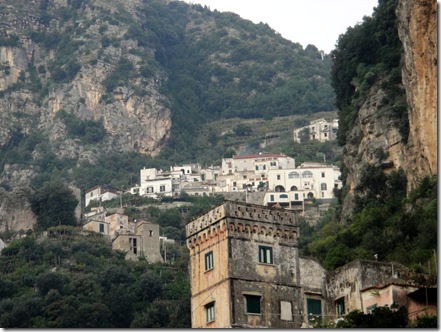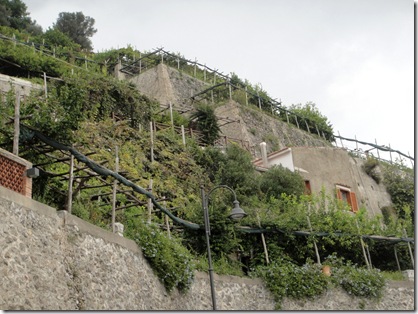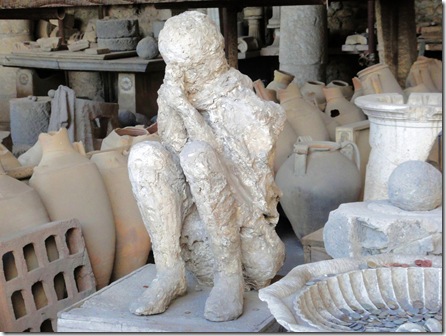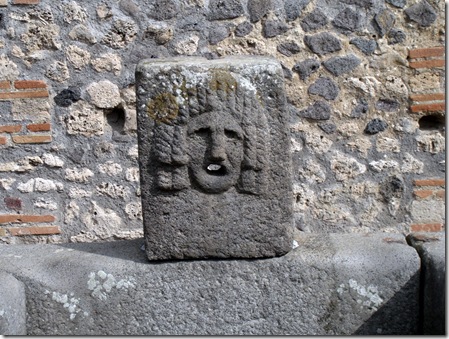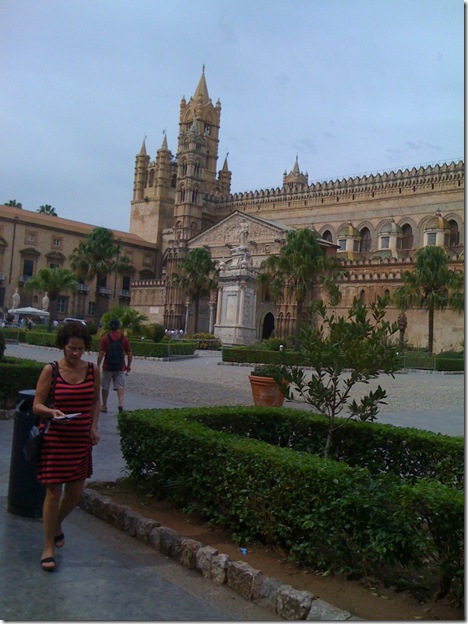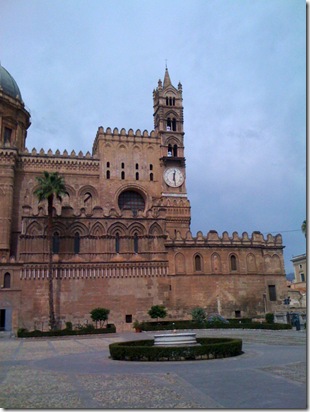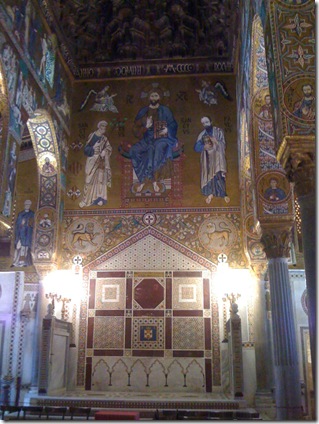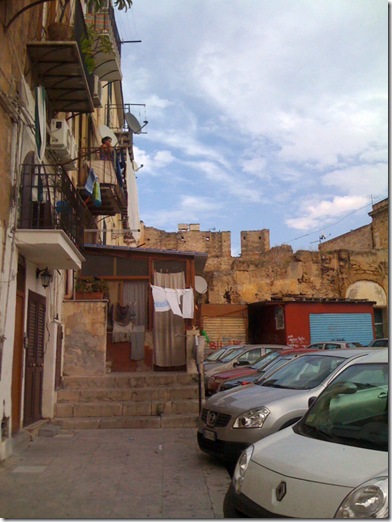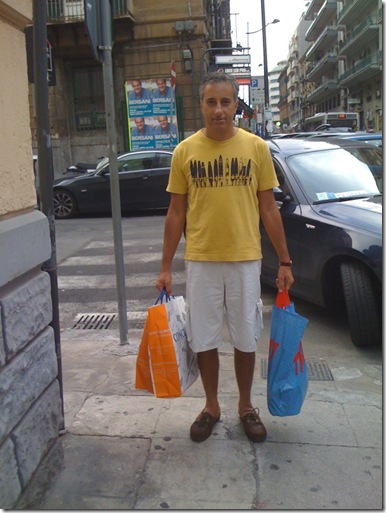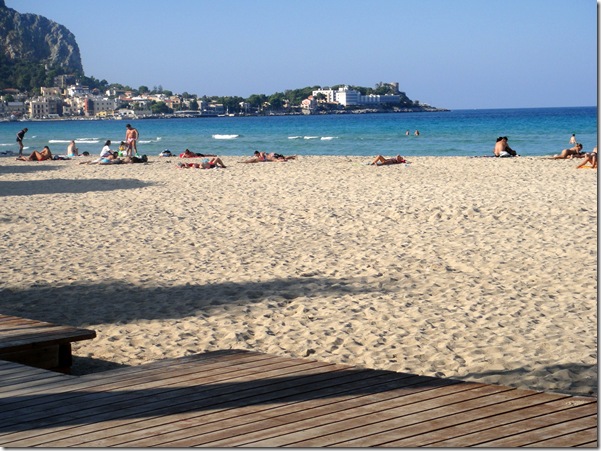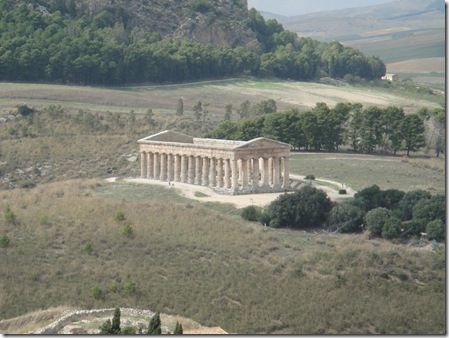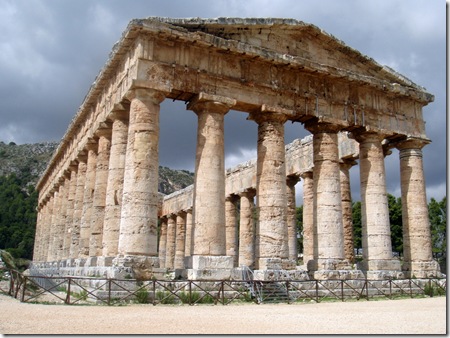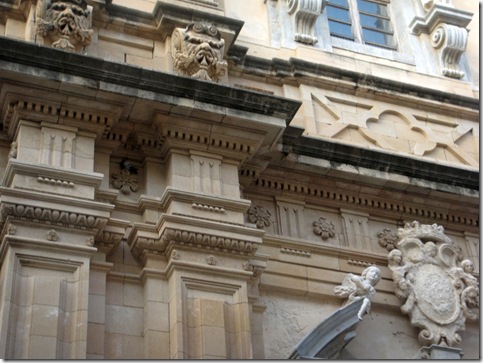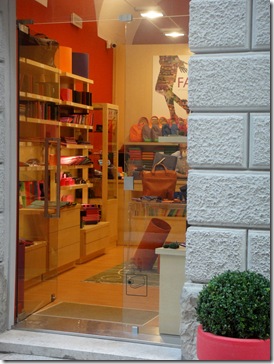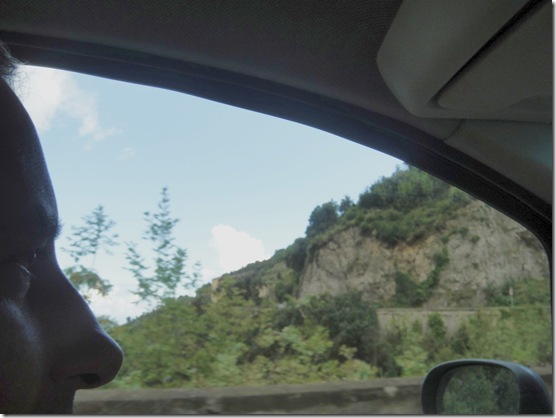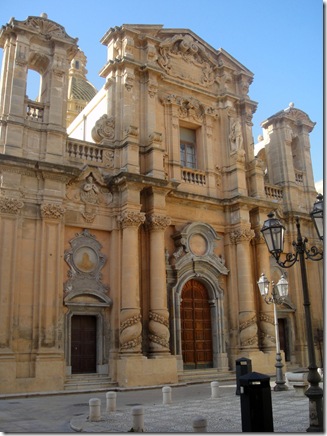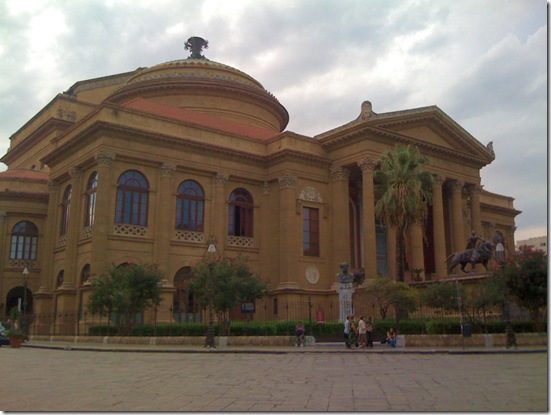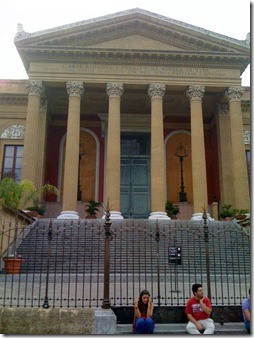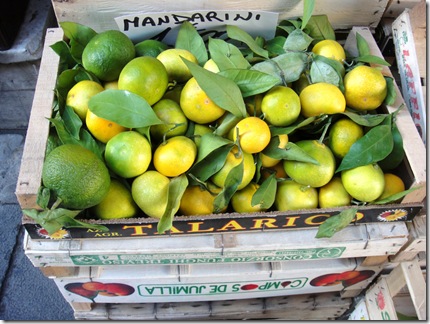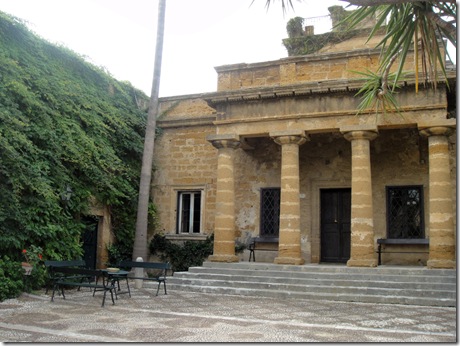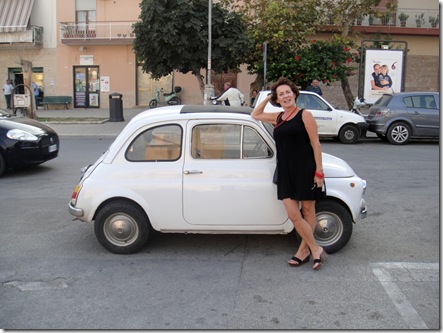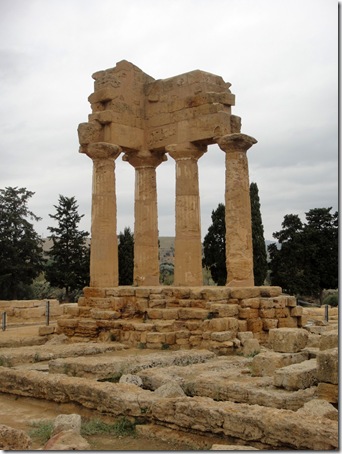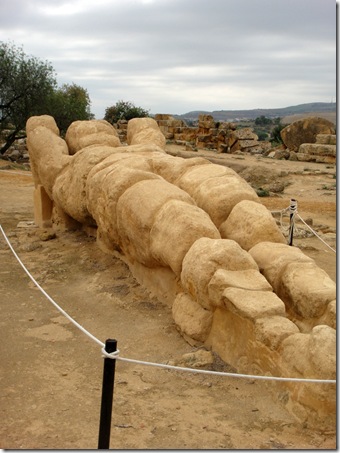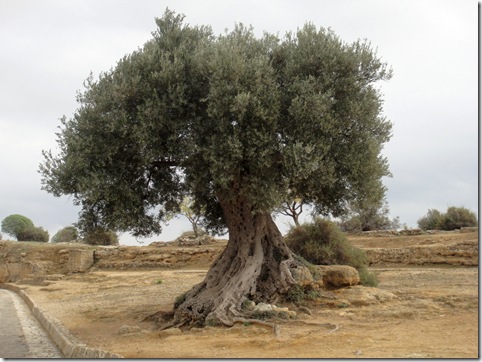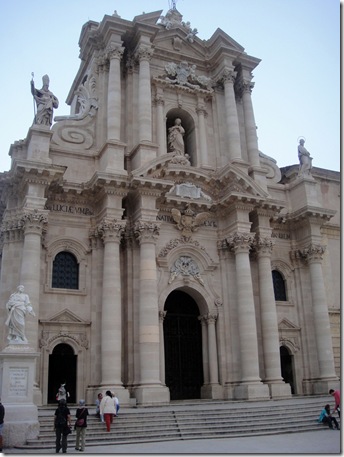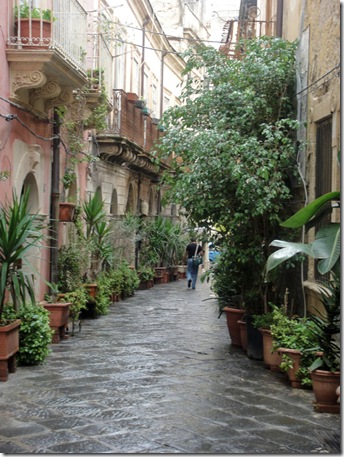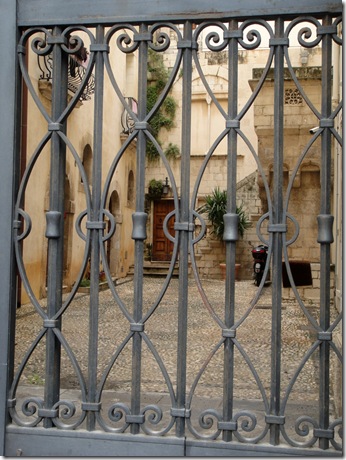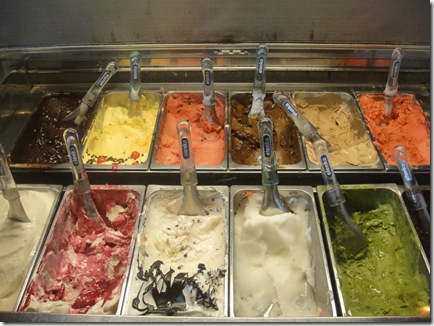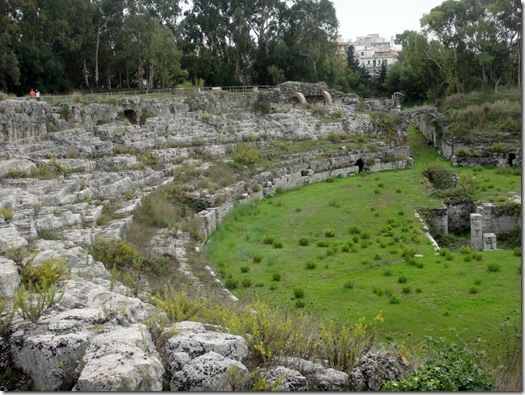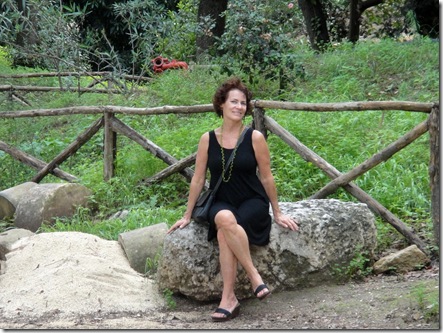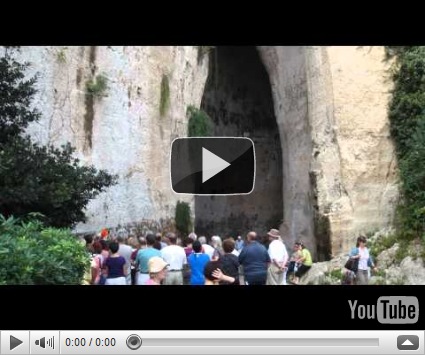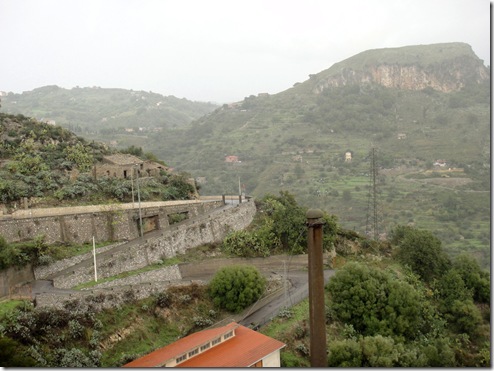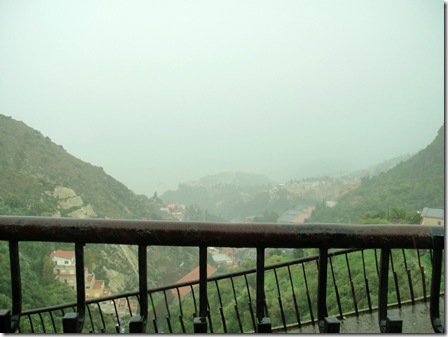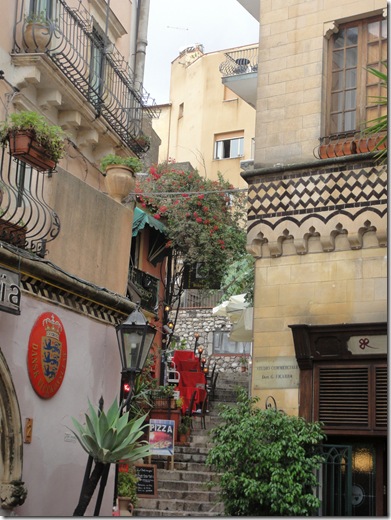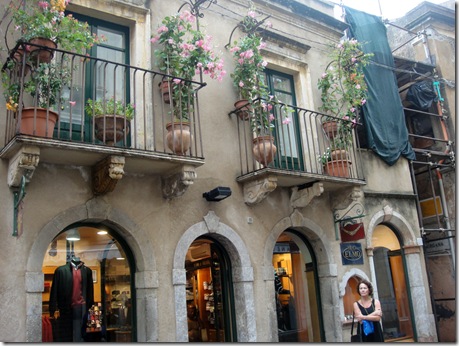The ferry carrying us and our car arrived in Villa San Giovanni from Sicily at 8:30 pm. We plugged a Tropea address, a coastal town to the north, into the GPS and we followed Martha’s confident instructions…away from the sea. Besides the sinking feeling that we were, once again, heading higher and higher into interior dark mountains, we had no map of the mainland – a map of Sicily only having come with the rental car. We did not plan ahead with a mainland map to “confirm” the GPS instructions. There were two highway exits Martha seemed to like that seemed promising for heading to the shore in the vicinity of Tropea, though Martha just insisted that we make U-turns each time we exited (four times in all at the two exits), and the roads seemed to lead nowhere. Dark altitude surrounded us and the time kept getting later with each revisited exit. We finally decided that the next big town along the highway, Cosenza, would be a better place to spend the night at this point. After an excellent highway rest stop dinner (only in Italy – sautéed asparagus, spinach, and exotic mushrooms!), we arrived in Cosenza just at midnight and drove around following signs for hotels, praying that someone would still be at the front desks. The first one we tried was way too expensive, the second one affordable…and for good reason. In Italy for the Gourmet Traveler Fred Plotkin describes Cosenza as a town that was frozen in time: the old center has the same look as 1914 -1940; the newer city still looks like early ‘60’s. Our hotel room definitely looked like early ‘60’s, so I rather enjoyed this fact while Newton, unamused, fell out immediately from exhaustion. The perfect ending to this leg of the trip occurred the next morning at 7:30 when the early sounds of construction were, in this case, sounds of destruction – alarmingly near. Once we got up and opened the curtains during a lull in the pounding and shaking, sure enough – there was scaffolding outside our third floor window and the men soon returned to continue hammering away at our wall. The hotel breakfast was bad, but we followed Fred’s recommendation in the old center to a 200-year-old café for a charming and delicious breakfast from 1940.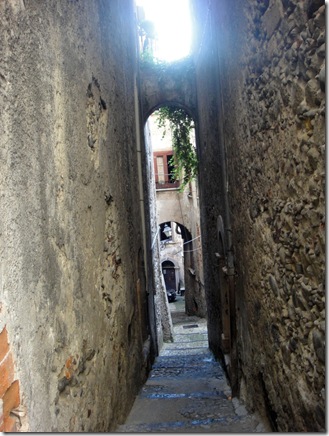
Lunch was deliciousness in Salerno, with quite a crazy waiter who served extra dishes to people and made up his own prices afterwards. We’re accustomed to the non-linear in Brazil, but it was funny to see the reaction of an innocent American couple when their bill was almost double what they expected! Fred had already described the sleepiness of Calabria and the craziness of Campania, so we were ready. Our destination was the Amalfi Coast, to the west. 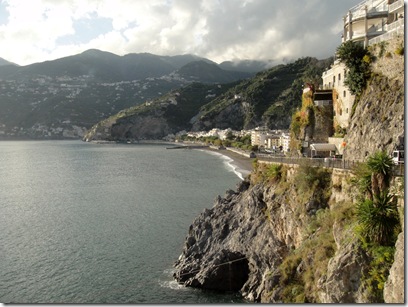 Let the beauty begin! It is possible to forgive the tourist flavor, once again, when one is driving in such a thrilling setting: the Mediterranean glistening below, the road winding above along the cliffs, the green hills and towns rising up. It is an exaggeration of Cinque Terre to the north; bigger, higher, more chic, more dramatic. These photos do it little justice, especially being hazy…better to go there!
Let the beauty begin! It is possible to forgive the tourist flavor, once again, when one is driving in such a thrilling setting: the Mediterranean glistening below, the road winding above along the cliffs, the green hills and towns rising up. It is an exaggeration of Cinque Terre to the north; bigger, higher, more chic, more dramatic. These photos do it little justice, especially being hazy…better to go there!
Newton was expert at driving on the curves, unfazed by oncoming tourist busses because Brazilians, like Italians, see “plenty of room” where this American does not!
Here is a terraced vineyard along the Coast:
We had great luck finding a hotel in Amalfi on the i-phone – our favorite hotel of all.  Fred’s dinner recommendation led us along the labyrinthine enclosed ‘streets’ above the town’s main street. Alas, his recommended restaurant had a new name and few diners, so we opted for a crowded trattoria where I actually had my favorite meal of the trip: mozzarella baked in fresh lemon leaves and sautéed endive, accompanied by Fred’s favorite white wine of the region, Fiano di Avellino. This was followed by limoncello liqueur at a bar, since flavorful Amalfi lemons from the rich volcanic soil are the official source for Italy’s limoncello.
Fred’s dinner recommendation led us along the labyrinthine enclosed ‘streets’ above the town’s main street. Alas, his recommended restaurant had a new name and few diners, so we opted for a crowded trattoria where I actually had my favorite meal of the trip: mozzarella baked in fresh lemon leaves and sautéed endive, accompanied by Fred’s favorite white wine of the region, Fiano di Avellino. This was followed by limoncello liqueur at a bar, since flavorful Amalfi lemons from the rich volcanic soil are the official source for Italy’s limoncello.
We decided to stay in Amalfi two nights and commute to Pompeii.
Pompeii is an amazing excavation because it is an entire city that was well-preserved under the ash and rock of Mount Vesuvius’ 79 A.D. eruption. Only two-thirds of the city has been unearthed. We decided on a guided tour in English (heavily-accented English) and appreciated hearing the details of this amazing record of Roman life. An earthquake had occurred there seventeen years prior to the volcano’s eruption, so some structures were still in mid-repair when buried. I visited Pompeii when I was 17, but did not remember much beyond driving up to the volcano, the well-preserved frescoes in a house, and the men being led to view pornographic paintings which were off-limits to us delicate females. This time the guide reliably pointed out the bas relief penises pointing the way to the brothel district, then led all of us through a brothel with its stone beds and descriptive frescoes which enabled men arriving from all over the Mediterranean to simply point to their preferences. Part of the excavation work at the site has involved pouring liquid plaster into the pumice soil and rock and later removing the hardened shapes left behind in vacuums of disintegrated utensils, urns, and human or animal remains:
There are lead pipes along the streets for running water to the public drinking fountains and baths:
There are stepping stones for crossing the streets: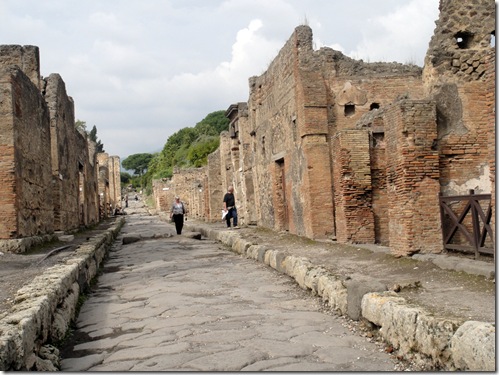
There are many shops, like this ‘fast food’ shop:
There are small homes and elegant mansions, such as this one: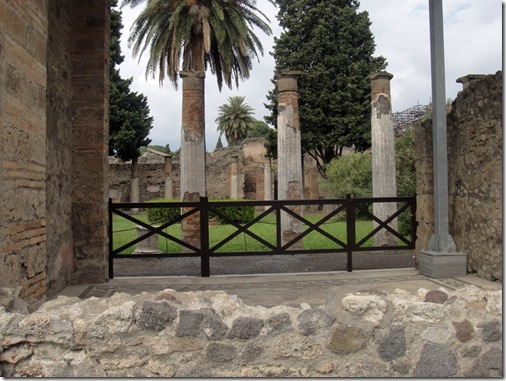
Also, temples and government buildings: 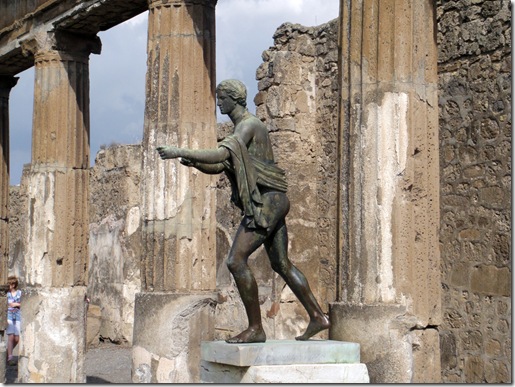
Frescoes are especially well-preserved because of the method of painting on still-wet plaster. These are inside a home: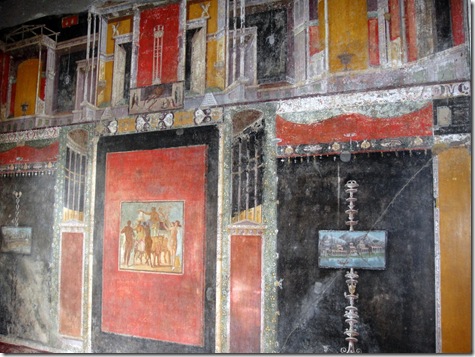
Vesuvius looms compellingly in the background.
Extend the sloping lines upward on the two sides to imagine how it looked in 79 A.D.:
When we returned to Amalfi for the evening, we were too tired to drive one town over to Ravello to have dinner at Fred’s favorite place in the region. Our rather touristy dinner in Amalfi was nevertheless good, and conversation with an interesting couple from Toronto – he, a film producer and she, a newspaper editor – added a welcome dimension. My ears still get prickly when I hear American (or Canadian) accents, having run into so few Americans in Natal. Americans were pretty scarce in Sicily, as well, so my antenna was way up to overhear them in this region.
The route over the mountains was by choice the next 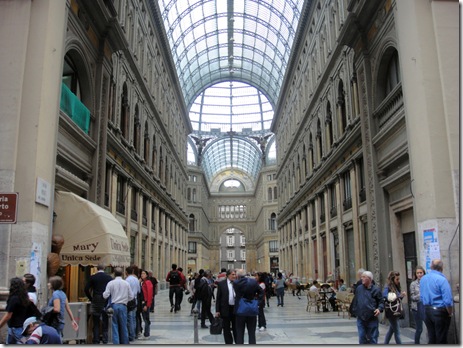 morning on our way to Naples, the birthplace of pizza, for a pizza lunch. We found Fred’s recommended fresh mozzarella, basil, and fresh tomato sauce pizza after an hour of Martha’s unsuccessful maneuvering among non-traffic streets, one-way streets and dead-end streets. Luckily, a helpful woman noticed we were stuck in a place with no escape and instructed us to enter a “do not enter” street and make our way to parking possibilities. Newton could always understand everyone’s Italian! Fred describes Napoli as a place of excitement and perpetual motion. He says that – as the Romans are sensual – the Neapolitans are excited, living under the threat of hovering Vesuvius. We walked the busy streets of the center and confirmed the blur of motion, the animated citizens touching each other, arguing over the best fresh lemonade, playing great street jazz, hurrying. Here is the beautiful galleria:
morning on our way to Naples, the birthplace of pizza, for a pizza lunch. We found Fred’s recommended fresh mozzarella, basil, and fresh tomato sauce pizza after an hour of Martha’s unsuccessful maneuvering among non-traffic streets, one-way streets and dead-end streets. Luckily, a helpful woman noticed we were stuck in a place with no escape and instructed us to enter a “do not enter” street and make our way to parking possibilities. Newton could always understand everyone’s Italian! Fred describes Napoli as a place of excitement and perpetual motion. He says that – as the Romans are sensual – the Neapolitans are excited, living under the threat of hovering Vesuvius. We walked the busy streets of the center and confirmed the blur of motion, the animated citizens touching each other, arguing over the best fresh lemonade, playing great street jazz, hurrying. Here is the beautiful galleria:
It was now time for poor preparations to catch up with us again. We had meant to reserve a hotel in Rome for the last night, but had never done it. We sat in our parked car in Naples checking for internet hotel listings on the laptop…until the battery ran out. While this left the hotel question unsolved, it made the rental car return schedule in Rome very tight. Martha headed us to Rome and to the agency address. We called to check about closing time once we were in Rome and had just about the right amount of leeway when we miss-counted the exits in a crowded roundabout. Martha likes to just say “Enter the roundabout and take the third exit,” for example. In this case, she said the fourth but we took the third. By the time Martha corrected this mistake in traffico Romano, the rental agency was no longer answering the phone. We pulled over and started looking for hotel possibilities on the extremely slow i-phone. While we deliberated choosing a hotel near the airport, a parked car pulled out of a free parking spot right beside us. We pulled in and decided to roam the area for a hotel. Newton held his i-phone and we walked to various hotel addresses listed there. The first one sold out one minute before we walked in; the others were non-existent (?). We knew there was a reasonably-priced hotel out near the airport and that we could return the rental car there; it was just tricky now to get an online reservation since the i-phone connection was so slow and the hotel was not answering the phone. While we walked back to a trendy, lively restaurant that had caught our eye, Newton secured our reservation for the night. Our last dinner in Italy was amidst a local crowd in a restaurant with a film theme. There were many photos of the late Massimo Triosi and his actual bicycle from “Il Postino.” It was fun, but Fred would never recommend the food. Once again around midnight, Martha led us to our country hotel in Ostia – an archeological site from the ancient port of Rome. When we awoke the next morning, we were surprised to find a castle fortress right out our window!
We passed the ancient ruins en route to the airport. Clearing out the glove compartment before turning in the car, we happened upon a…map of the mainland! Oh well.
“Arrivederci, Italia,” we said as we caught our flight to Athens and our trip metamorphosed into Newton’s business trip.
Love,
Sandy
